How to grow jasmine: expert tips on growing this scented climber
Find out how to grow jasmine and you can train this deliciously scented climber to grow up your garden fences, walls and pergolas


If you want to know how to grow jasmine, you first need to work out what variety to choose as there is quite a selection. There are evergreen or deciduous types, as well as woody stemmed shrubby ones. Pick from a range of white, yellow or pink star-shaped flowers that grow in pretty clusters. Some types of jasmine flower in winter and some in summer, so take your pick.
There are both indoor and outdoor types of jasmine. When it comes to outdoors jasmine is a great screening plant. The stems of hardy ones will twine and scramble over any available fence, pergola or archway if you add wires for them to cling to. As well as it being one of the best climbing plants, you can also get shrub types that are good for hedges.
Tender varieties of jasmine can be grown indoors with supportive hoops or in a conservatory or greenhouse as they need protection. Their fragrance will fill a room.
When it comes to how to grow jasmine the most important advice is to choose the right one for the space you have in mind. This means checking how tall it will grow, how far it will spread and how hardy it is. Get this right and it’s easy from there on.
How to grow jasmine: quick tips
- Plant in moist but well-drained soil enriched with organic matter.
- Choose a spot that's in full sun as generally they always do best here.
- Some varieties will tolerate shade.
- Offer sturdy climbing plant support ideas such as a trellis or wires to give climbers something to cling to.
- Feed weekly with a high potash fertilizer in summer.
- Mulch in autumn with well-rotted manure or leaf mould to add a protective layer
- Cut them back after flowering.

What are the main types of jasmine?
- Common jasmine (Jasminum officinale) is a vigorous climber with clusters of fragrant white flowers in summer. It does best in well-drained soil in a sheltered spot that gets full sun. It grows quickly, and is ideal for covering walls or fences.
- Winter jasmine (Jasminum nudiflorum) has bright yellow flowers on its arching stems in winter and early spring that aren’t scented. It’s a great choice to brighten up your winter garden ideas. It’s often grown as a hedge or trained against a wall. It's happy in most situations, in sun or partial shade.
- Jasmine polyanthum is a house plant with very fragrant white flowers in later winter and spring. It can also be grown up a trellis in a conservatory, enclosed porch or heated greenhouse ideas.
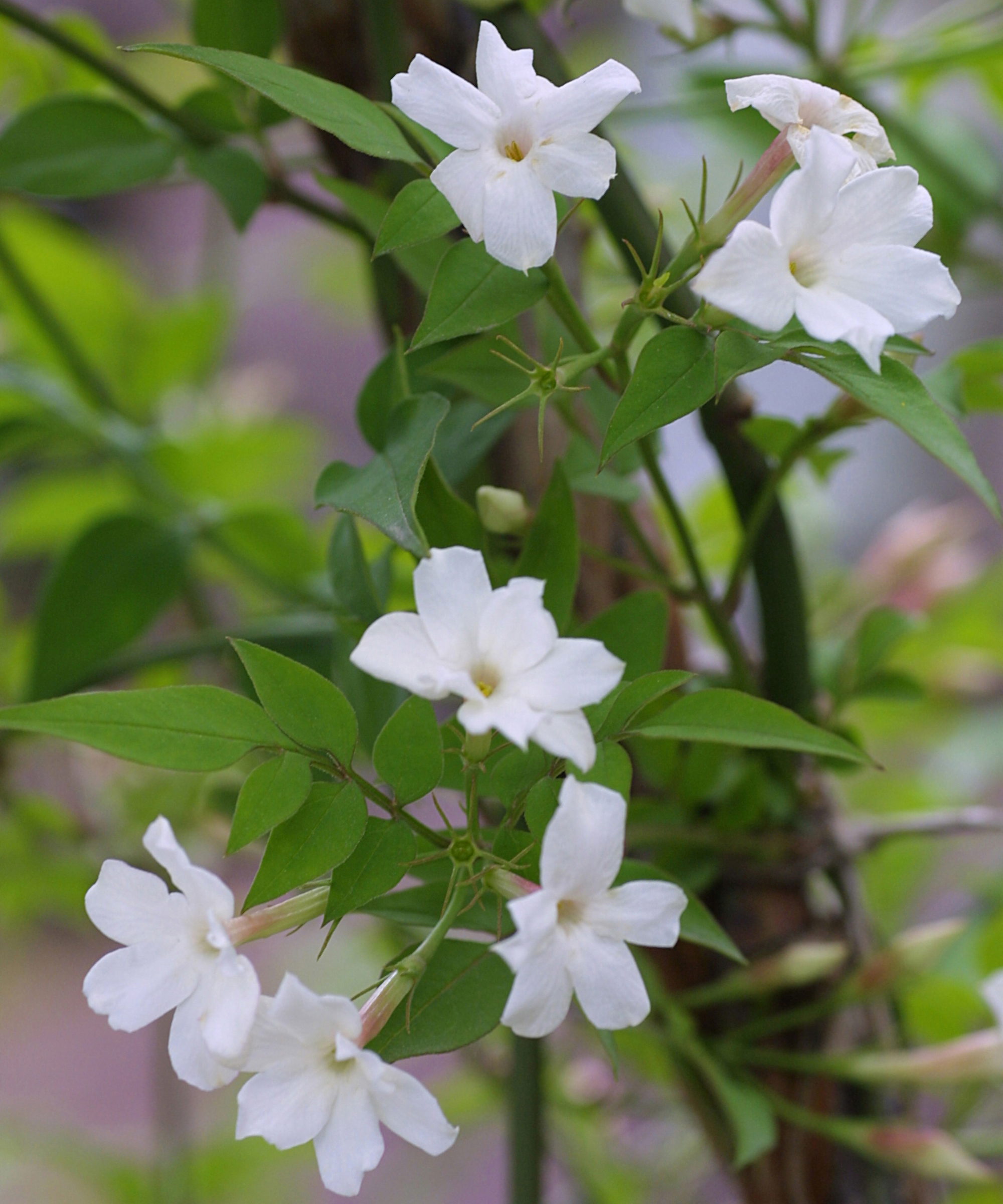
Is jasmine easy to grow?
Choose the right type of jasmine for the right spot and it’s easy to grow successfully. It’s generally a tough shrub that is happy wherever you plant it, preferably in full sun but some thrive in dappled shade too.
Jasmine don’t tend to suffer from pests or disease but remember that protection from cold temperatures is one of the most important things to factor in when it comes to how to grow jasmine successfully.
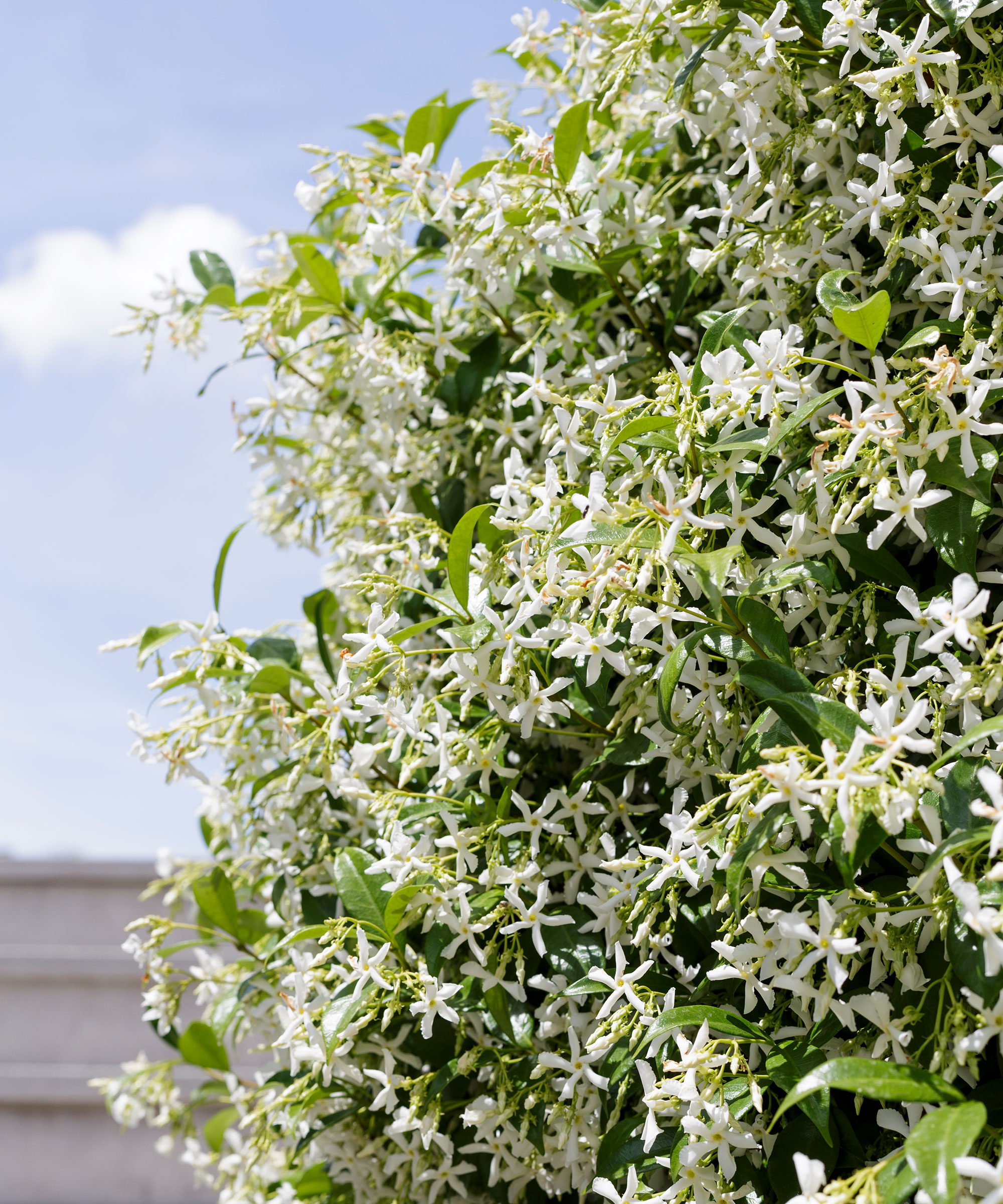
Where is the best place to plant jasmine?
Getting the right spot is key if you want to know how to grow jasmine successfully.
- Plant jasmine somewhere sunny, warm and sheltered, preferably framing a door or archway or near your outdoor seating ideas where you can most enjoy the scent.
- Summer-flowering jasmine does well in a sunny spot.
- Winter jasmine does best growing in the shelter of a north-facing wall so in the event of frost or snow it can thaw slowly and the flowers won’t turn brown. Winter flowering varieties do better planted in partial shade.
- If you want to grow jasmine for garden screening ideas, plant it near a wall or fence with adequate support for the plant to twine.
- You can also try planting jasmine so that it grows up and through a tree to create an eye catching feature.
- You can also combine jasmine with your trellis ideas for gardens. Plant it in a large pot with an obelisk or trellis for it to trail up and over.

How to plant jasmine
- Plant summer jasmine in spring or autumn, and winter jasmine in autumn or winter. Before planting always check labels carefully for individual requirements.
- Dig a planting hole and add well-rotted manure or compost to the bottom. On heavy soils, add plenty of grit to improve drainage.
- Plant summer jasmines like common jasmine (Jasminum officinale) in a warm, sheltered, sunny spot. They dislike cold or frost-prone sites. They can be quite vigorous climbers and can be grown in containers or in the ground.
- Plant winter jasmine in sun or partial shade. It doesn’t need support, although it can be trained against your garden wall ideas. It can also be grown as a hedge.
- Keep tender jasmines indoors in a warm, bright spot such as a conservatory. You can also move them outside in summer, to a warm, sheltered spot but bring them back inside if temperatures drop at night.
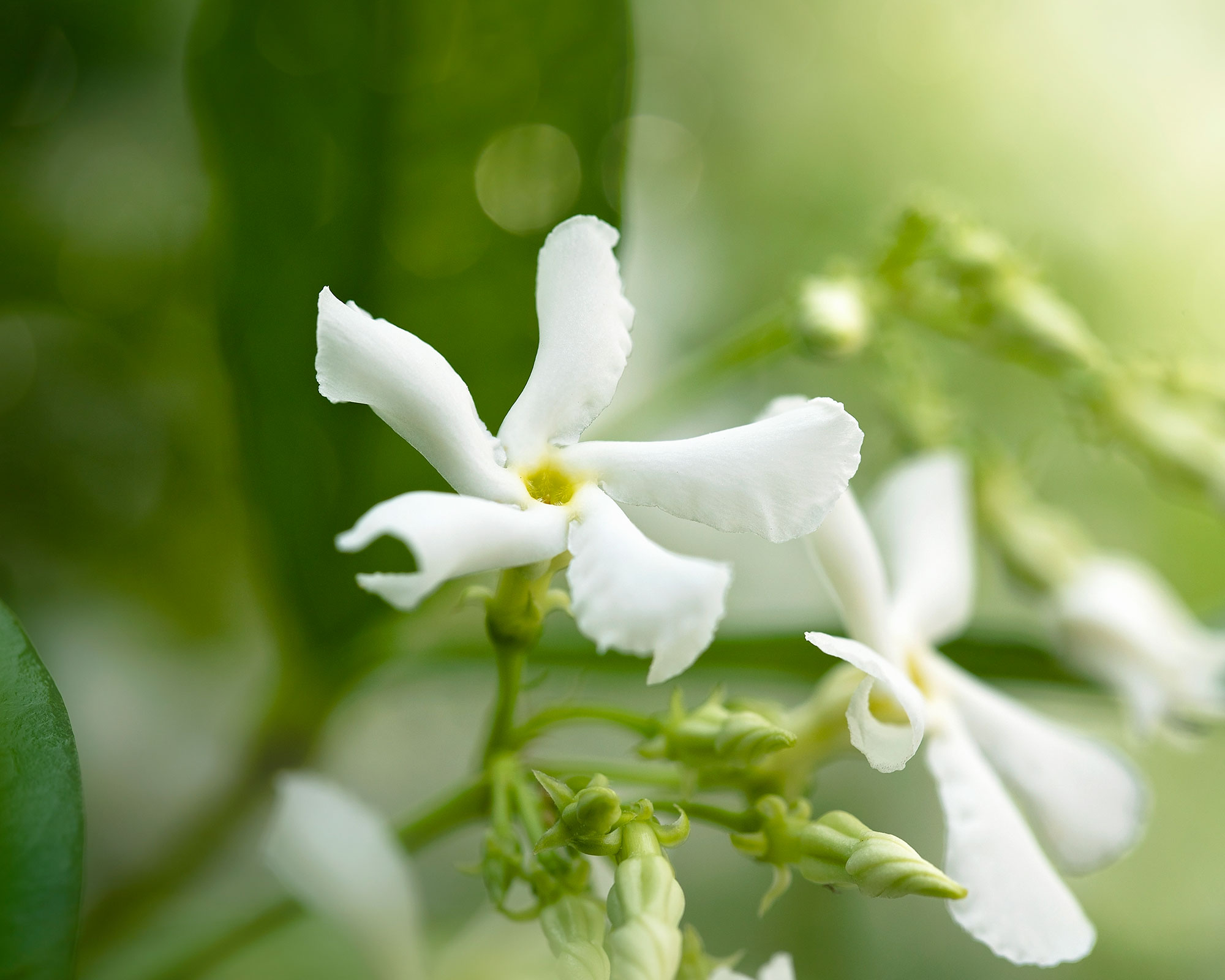
Can you grow jasmine in pots?
As long as jasmine is grown in well-draining soil and gets plenty of sun and water, it adapts well to container gardening ideas. A loam-based compost is a good choice as it holds water well in addition to having added nutrients.
Try growing jasmine in a pot against a sunny wall. Your plant will need good winter drainage though, so move it into a drier position at the end of the season and stand it on pot feet so any excess water drains away.
During the growing season feed potted jasmine plants once a month with a high potassium liquid feed such as tomato fertilizer.
It’s a good idea to repot your plant with fresh compost in spring to rejuvenate it for the growing season. There's tips on how to repot a plant in our guide.
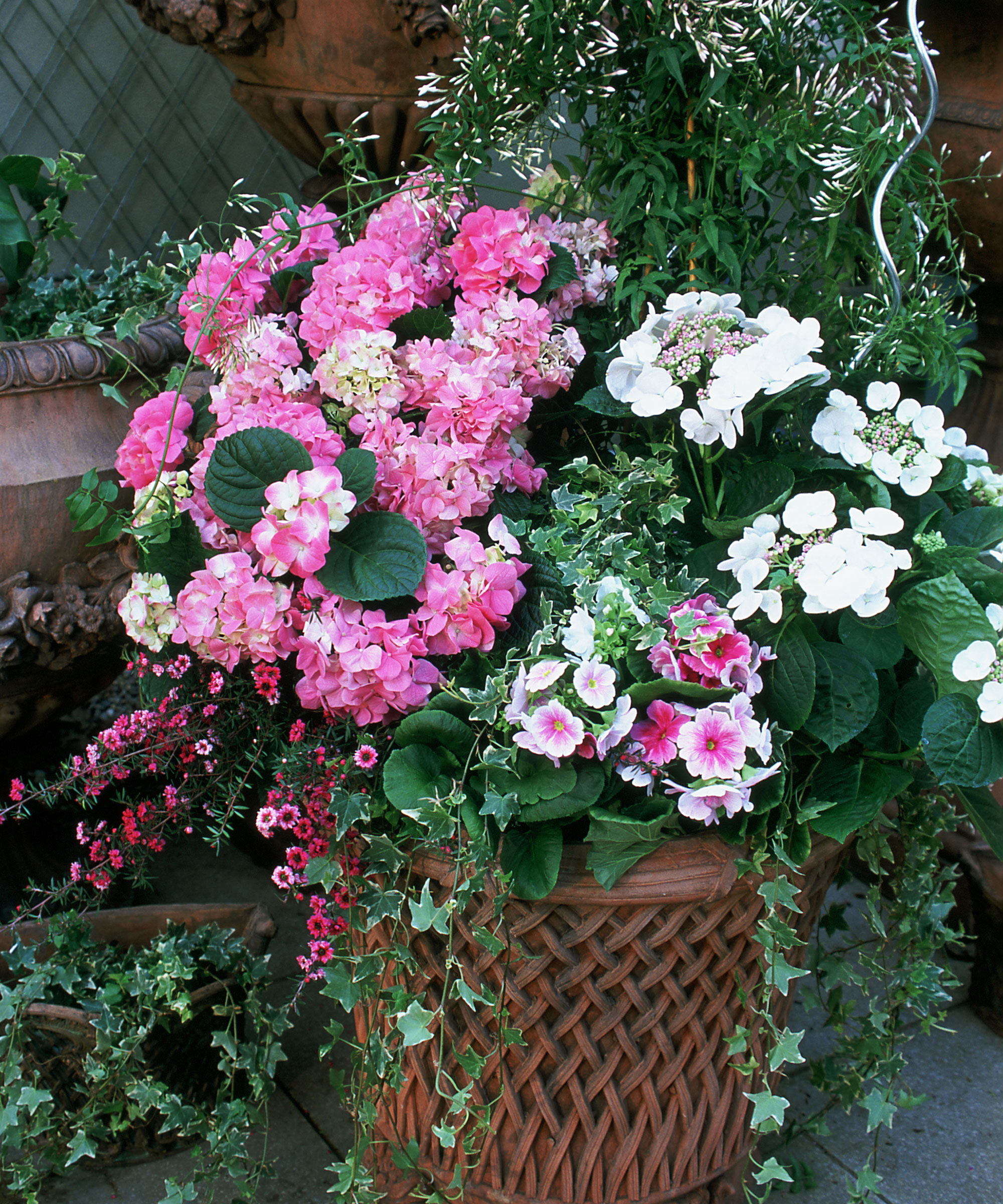
How long does jasmine take to grow?
There are varieties of jasmine that are super-quick vigorous growers that can in some cases become rampant. Star jasmine (also known as Trachelospermum Jasminoides) is one of the fastest growing climbers and will quickly cover walls, trellises and fences. If you’re looking for a quick fix living wall to cover an ugly boundary this is the one for you.
Although it can grow up to 9 meters tall Star jasmine still needs support or it will flop so make sure you have sturdy trellis in place.
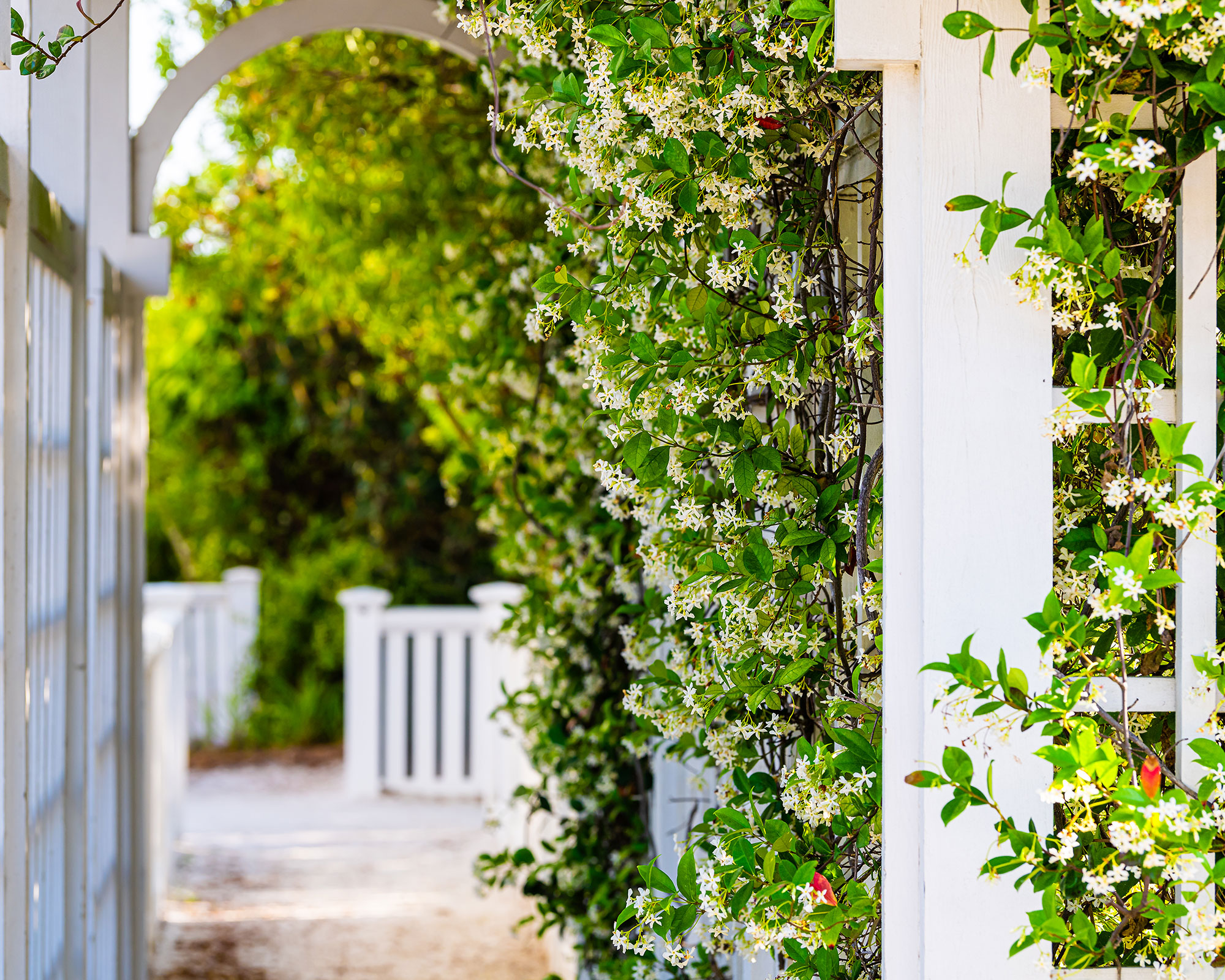
How to care for jasmine
Plant care is a crucial part of how to grow jasmine. Feed weekly with a high-potash fertilizer in summer, tying in young shoots to their support as you go. Jasmines in the ground can be given a general-purpose, granular fertilizer in spring.
Water newly planted jasmines regularly until well established. Plants in the ground shouldn’t require additional watering unless the weather is scorching but keep a close eye on jasmine growing in your garden planter ideas as they need regular watering throughout the growing season. Houseplants need regular watering during their growing season, but only light watering in winter.
In autumn, mulching around the base of the plant with well-rotted manure, compost or leaf mould will help to hold moisture in the soil, prevent weeds taking hold and help to insulate the roots. There's plenty of tips on how to compost in our guide.

How to prune jasmine
A key task in how to grow jasmine is pruning. By pruning annually, it will help to keep jasmine plants healthy, contained and improve their look if they have become tangled and straggly. This should be done after they have finished flowering. Follow these basic tips.
- Both winter and summer jasmine should be pruned back after flowering to allow new growth time to mature and flower early next season. Cut back to a strong side-shoot lower down. Get rid of any dead wood or damaged stems.
- Vigorous plants can grow quite large but can be cut back hard to rejuvenate them and keep them under control. Both summer and winter jasmine can be pruned back hard if they have outgrown their original planting spot. Look out for vigorous young growth to train into shape.
- Just as with how to prune clematis, pruning your jasmine is a vital part of how to grow jasmine correctly. If you forget, in a year or two you will have old wood choking new growth meaning you end up with an untidy looking mass of dry branches.
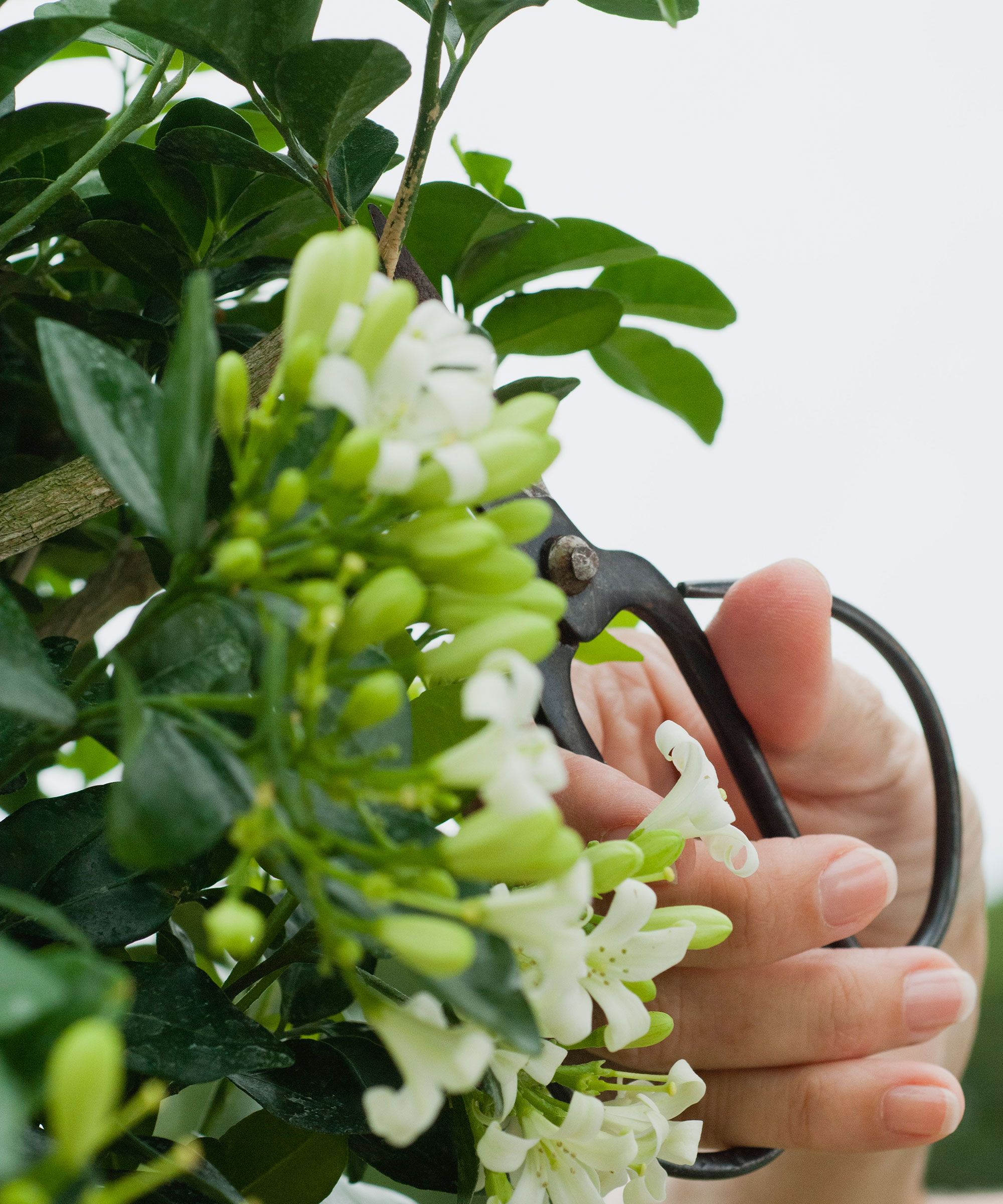
How to grow jasmine from seed
If you find a seedpod and want to try to grow new jasmine plants from the seeds, wait until they have matured and the pods are dry.
Soak the seeds in warm water overnight so they will germinate faster, then sow the individual seeds into seed compost. Cover with a light layer of soil.
For germination to happen make sure you keep the soil moist. The germination time for jasmine seeds depends on the variety but is usually around 4-6 weeks.
How to grow jasmine from cuttings
It’s easy to make new plants as jasmine can be propagated by learning how to take cuttings from plants.
Outdoor varieties of jasmine should be propagated from hardwood cuttings. Glasshouse varieties do best if they are propagated from softwood or semi-ripe cuttings taken in spring or summer. Follow these key tips:
- Look for springy new growth. Take a cutting measuring 10cm and make a cut below one pair of leaves.
- Strip away the lower leaves and remove any flowerbuds.
- Dip two thirds of the cutting into hormone rooting powder.
- Place several in a small round pot filled with half compost and half grit.
- Cover with a polythene bag and leave in the shade in a cool position, somewhere frost free.
- Remove the bag as soon as the cutting is established.
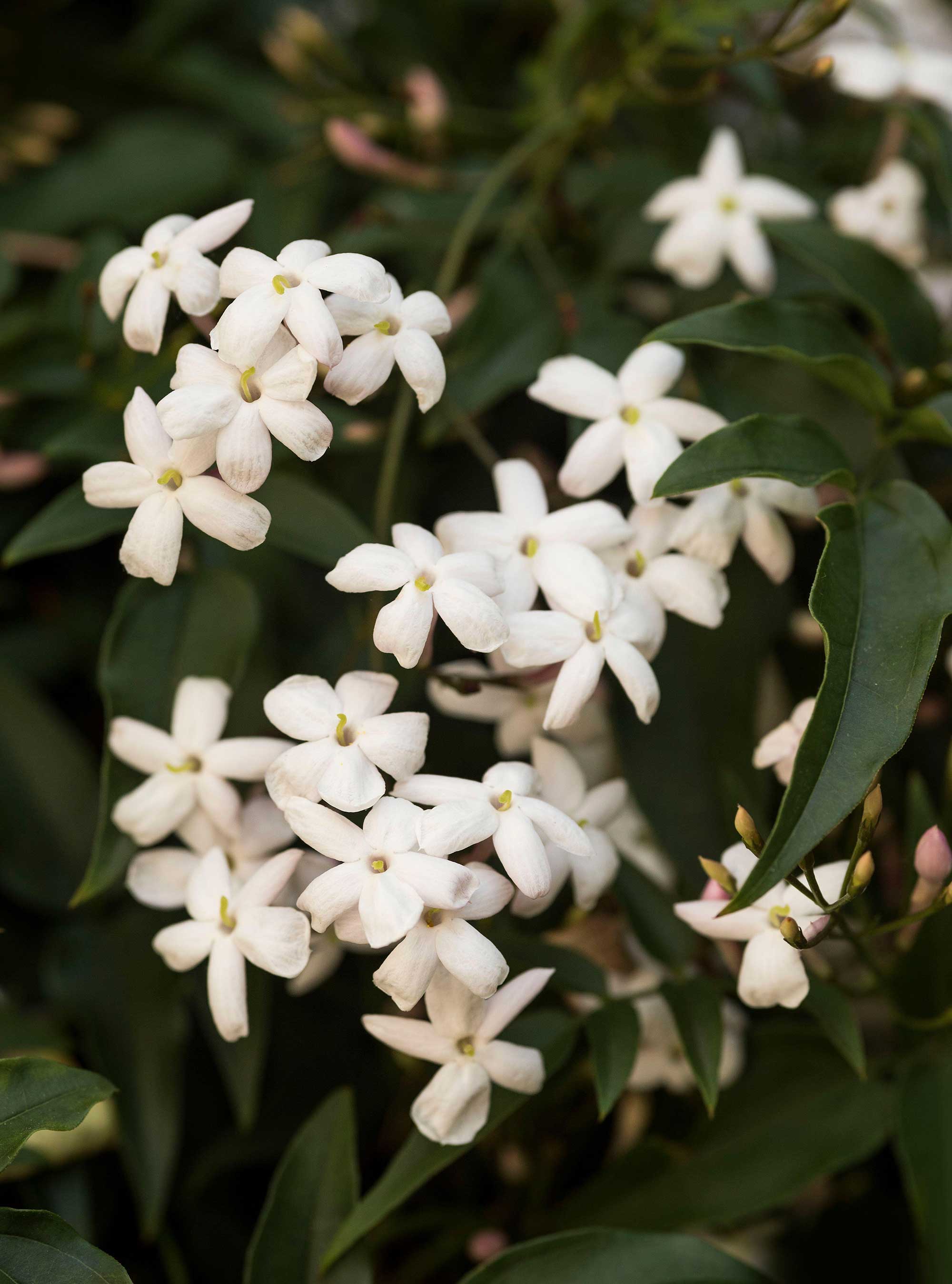
How to grow jasmine on a fence
Climbing, summer-flowering jasmines are ideal for covering fences and walls and as well as training around other structures like pergolas ideas and garden arbor ideas. Training jasmine vines will max up the visual impact of your plant, plus if you don’t it will look messy and swamp other flowers.
Using climbing plants such as jasmine is a natural option for your garden fence decoration ideas. Use trellis to form a structure for the jasmine to climb up. Plastic ties or garden twine can be used to fasten the vine to the trellis. Alternatively, you can weave the vine and its offshoots through the gaps in the trellis as they grow but you will need to keep an eye on this and check progress regularly.
You may need to trim your vine more than once a year, as the plant grows quickly. The best time to trim is in late winter before the growing season begins. Maintain a tidy appearance and encourage new growth by clipping regularly to restrain any messy bits.
Don't forget, our guides on how to grow honeysuckle and the best climbing roses are useful if you're looking for more great options to cover your fences and garden walls with pretty plants.
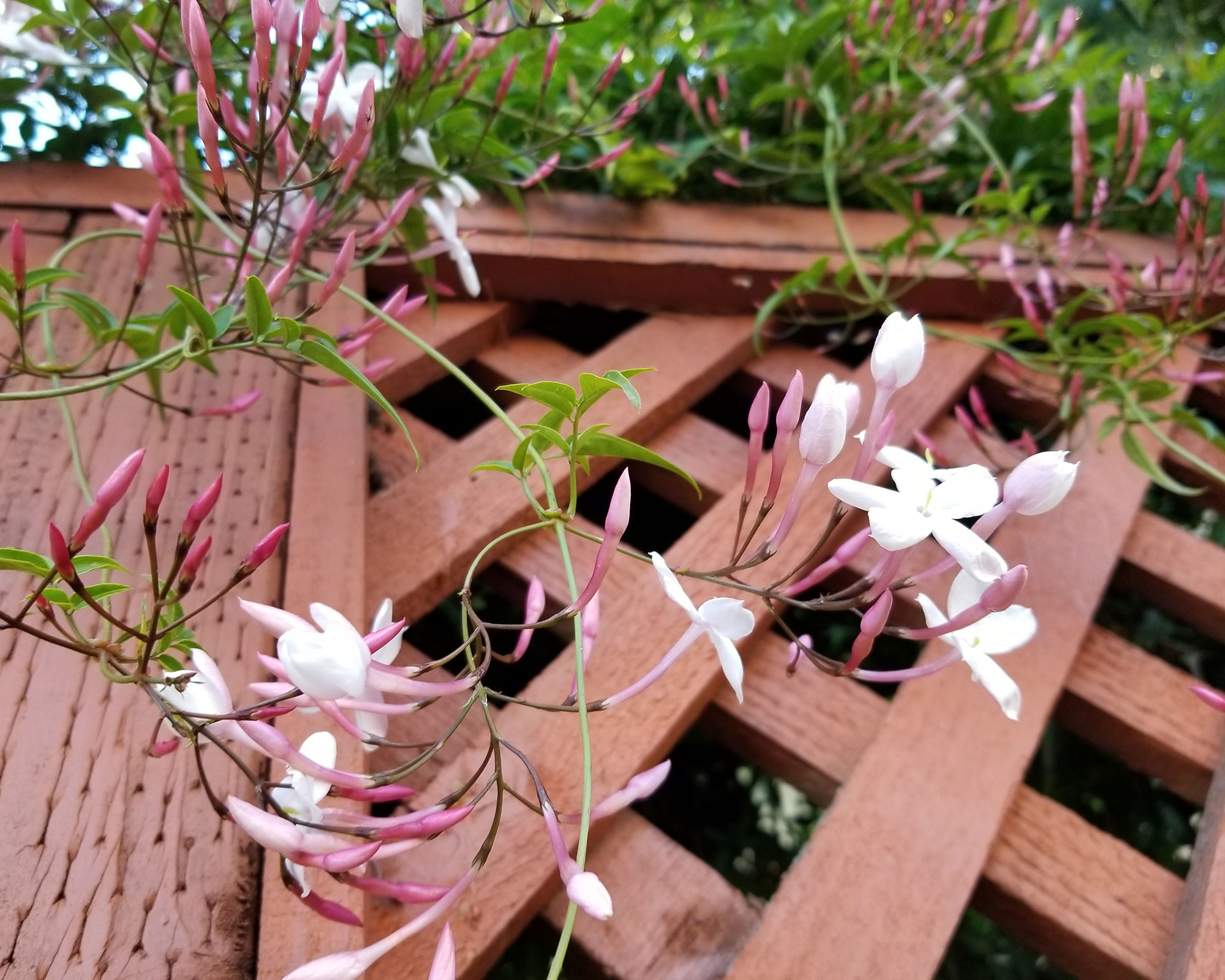
How to grow jasmine indoors
You might not think of jasmine as being one of the best indoor plants, but it has an intoxicating scent that stops you in your tracks which makes it perfect for fragrancing your home naturally. It’s surprisingly easy to grow indoors too as part of your indoor garden ideas if you follow a few basic how to grow jasmine tips.
Not all jasmine flowers are fragrant. Look out for jasminum polyanthum, the most common indoor variety, which has a deliciously sweet aroma that’s particularly fragrant in the evening and will waft through the house.
To get the best from your indoor jasmine, give it some vacation time outdoors in a sunny spot on your patio ideas during the summer so it can fully recharge its batteries in some fresh air.
Indoors, make sure your plants don't get too warm and don’t let the soil dry out. Jasmine should be kept it in a cool, well lit but unheated room for best results.
Soil for your indoor jasmine should be porous and moist. Feed once a month during spring with a half-strength liquid fertilizer that’s low in nitrogen.
Jasmine plants are big climbers so make sure you have an indoor trellis to keep them in check. And give it a regular trim with the best secateurs to keep things shapely.

Common problems with growing jasmine
Jasmine is generally a trouble-free plant as long as you grow it in the right conditions. Many jasmines aren’t fully hardy, so won’t be happy with cold temperatures though so always check you’ve got the right plant for the right place.
Outdoor plants suffer few pests and diseases, although you may see aphids on young shoots. If you do, our guide on how to get rid of aphids has some useful tips.
Check indoor jasmine regularly as they may attract pests like red spider mites or mealybugs. Remove with a cotton wool ball dipped in rubbing alcohol.
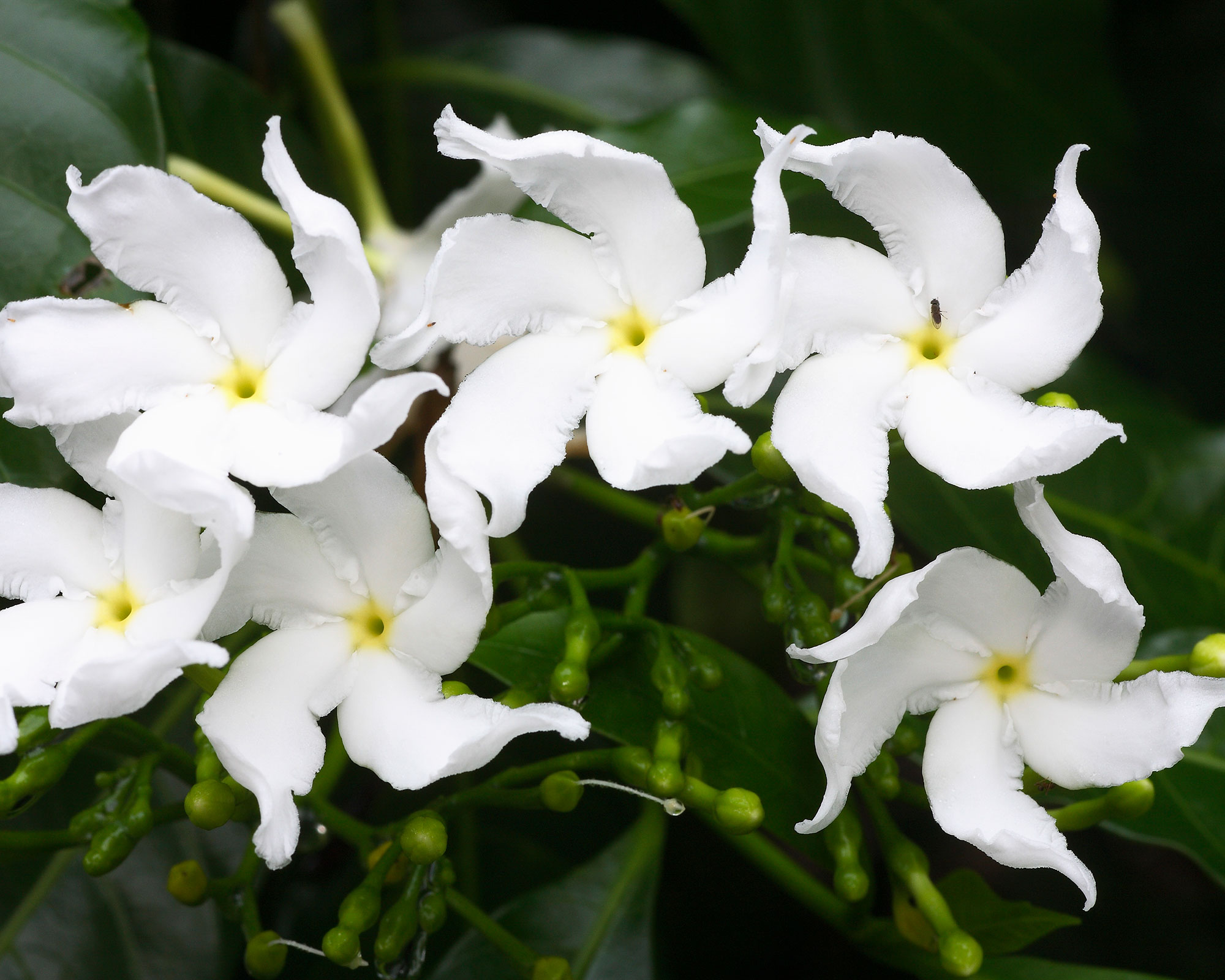
Where to buy jasmine
If you're keen to put our tips on how to grow jasmine into practice, start shopping now. There are lots of varieties of jasmine to choose from both online and at the garden center from a huge range of suppliers.
Use our quicklinks below to make life easy and take your pick from the best there is on offer.
Where to buy jasmine in the UK:
- Shop jasmine at Amazon
- Shop jasmine at Crocus
- Shop jasmine at Sarah Raven
- Shop jasmine at Suttons
- Shop jasmine at Thompson & Morgan
- Shop jasmine at Waitrose Garden
Where to buy jasmine in the US:
- Shop jasmine at Amazon
- Shop jasmine at Burpee
- Shop jasmine at Home Depot
- Shop jasmine at Target
- Shop jasmine at Walmart
4 types of jasmine to grow in your garden
Ready to give how to grow jasmine a go? We've picked out 4 of our favorite varieties that we think you'll love to have in your outdoor space.
1. Star jasmine
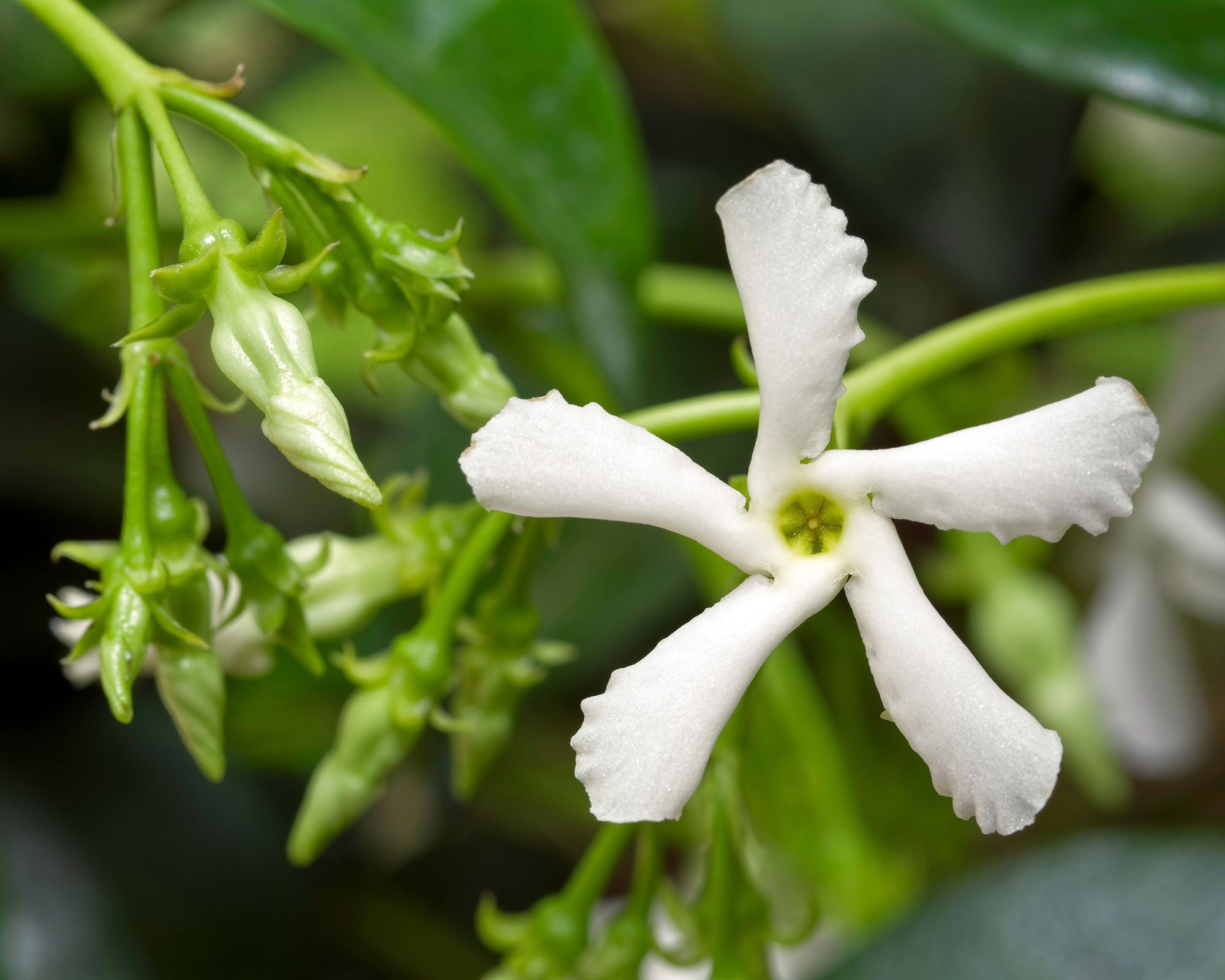
The classic star jasmine (Trachelospermum jasminoides) is a woody, evergreen climber with rich, dark green leaves that turn bronze in winter. The scented white flowers appear from mid to late summer.
2. Jasminum beesianum
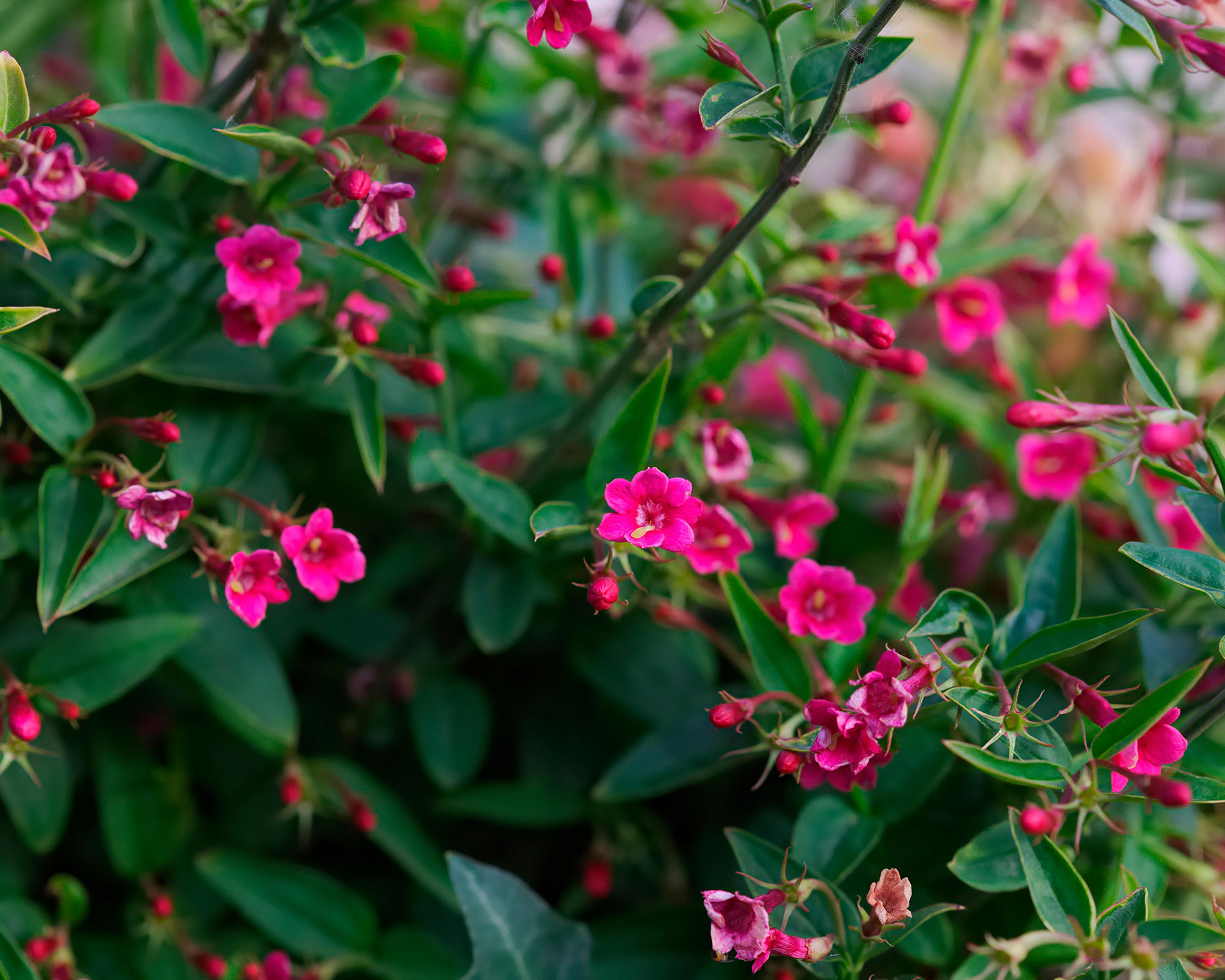
A vigorous, semi-evergreen climber with red-pink flowers in summer. It’s frost hardy, but may suffer in harsh winters. Choose a sheltered to enjoy the fragrance. Remove old and overcrowded shoots after flowering.
3. Winter jasmine
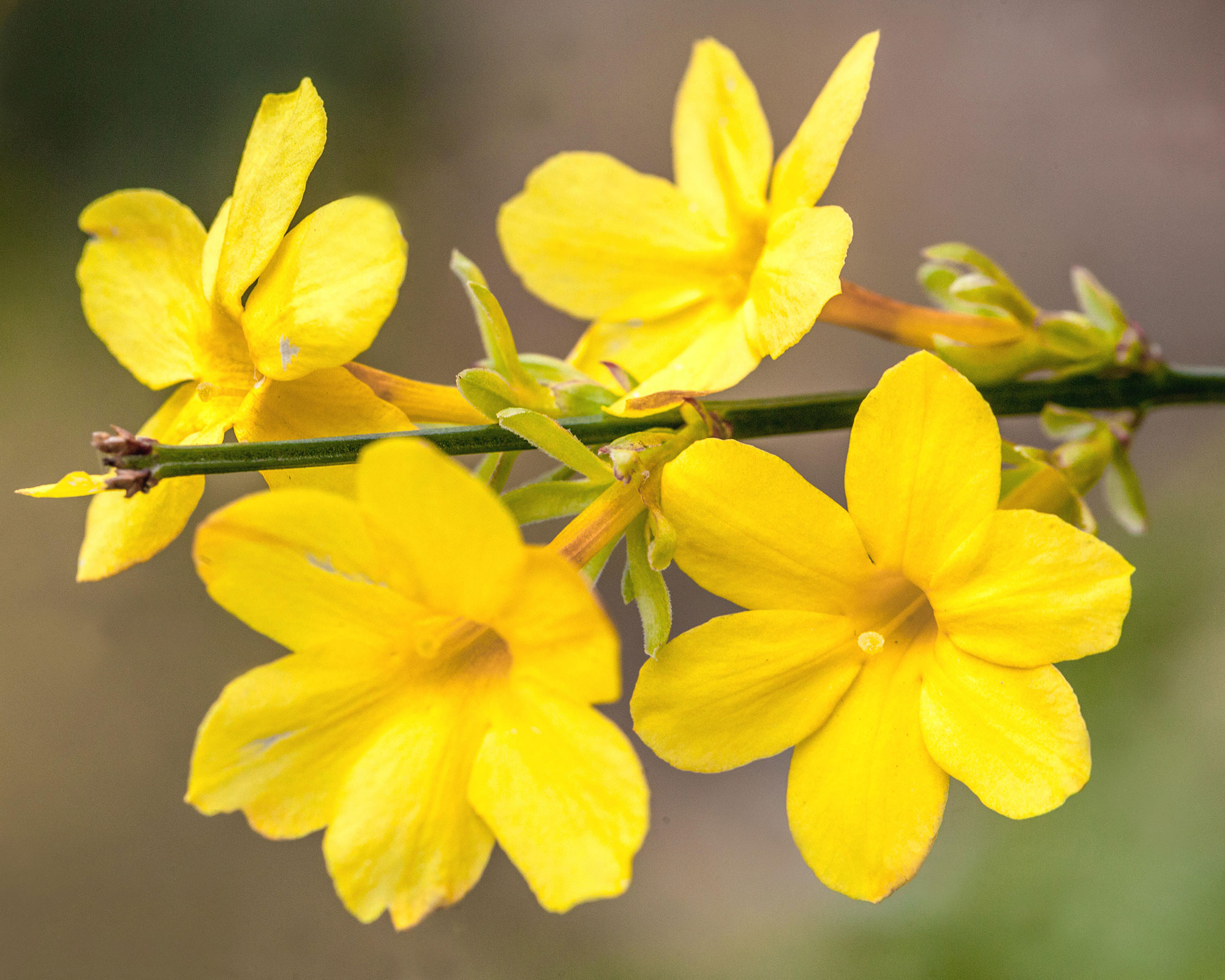
This iconic garden plant (also known as jasminum nudiflorum) has bright-yellow flowers on new olive-green stems. It can flower in midwinter but is a shrub not a climber. It picks really well too, lasting for several days in water.
4. Jasmine stephanense
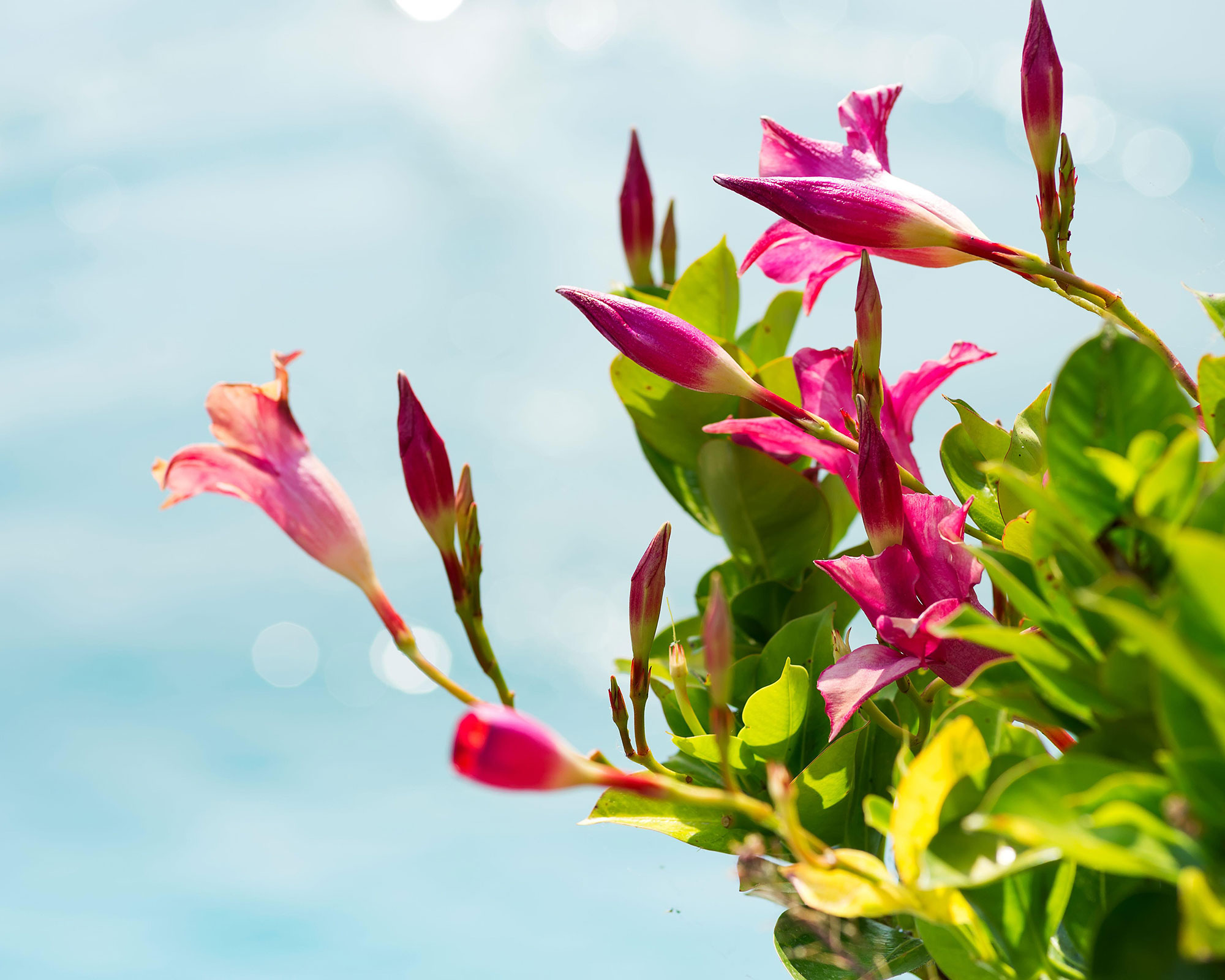
Pink, star shaped blooms fragrance the air in midsummer with their distinctive, sweet perfume. This vigorous twining climber will quickly cover walls and fences with ease. Position close to garden path ideas and doorways where the intoxicating aroma can be most appreciated.

Lifestyle journalist Sarah Wilson has been writing about gardens since 2015. She's written for Gardeningetc.com, Livingetc, Homes & Gardens, Easy Gardens and Modern Gardens magazines. Having studied introductory garden and landscape design, she is currently putting the skills learned to good use in her own space where the dream is establishing a cutting garden.
